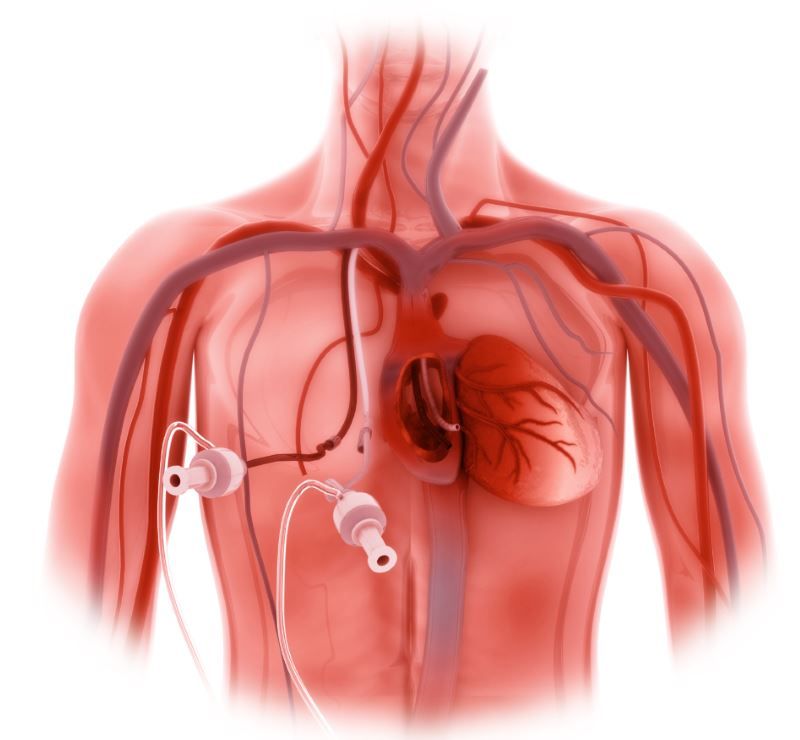Autosomal-dominant Polycystic Kidney Disease: 3 Studies in Brief
Three new studies on ADPKD treatment project long-term impact of tolvaptan; reveal potential in an existing drug class; and, report success in slowing comorbid hepatic disease.

There are few effective therapies available for autosomal-dominant polycystic kidney disease (ADPKD), one of the most common genetic diseases that can lead to chronic kidney disease (CKD) and end-stage renal disease (ESRD). We review 3 recently published studies that point to progress in current research; the outcomes provide new insights on:
- The potential long-term impact of a specific treatment on the disease burden of ADPKD on patients and the health care system;
- How some very early preclinical research unexpectedly turned up a potential new treatment approach based on a class of agents not currently used in ADPKD; and,
- A treatment found effective for ADPKD-related hepatomegaly.
Tolvaptan Predicted to Delay ESRD Onset by 5 Years
Tolvaptan, a selective vasopressin V2 antagonist, in 2018 became the first approved drug for treatment of ADPKD, based on data from clinical trials that demonstrated its safety and efficacy for up to 5 years of treatment. The most significant burden of ADPKD on patients and society, however, is levied by the progression of the disease toward ESRD over time, according to researcher Hayley Bennett of Health Economics and Outcomes Research Ltd, Cardiff, UK, and colleagues.
Accordingly, Bennett and colleagues sought to analyze the treatment effect of tolvaptan in the ADPKD Outcomes Model, a validated construct that they say can be used to simulate disease progression “over a lifetime horizon” and estimate the incidence of long-term clinical outcomes.
Using simulated patients, they found that tolvaptan therapy would be predicted to delay the mean age of ESRD onset by 5 years compared to the natural course of disease progression (57 years versus 52 years, respectively). The estimated ESRD delay was highest in patients with CKD stage 1, at 6.6 years, versus 4.7 years in the CKD 2 subgroup and 2.7 years in the CKD 3 subgroup; and in patients with rapidly progressing disease.
“Despite limitations with regards to the generalization of the results to all ADPKD patients, the data from this study highlight the potential value of early intervention and long-term treatment with tolvaptan, which may alleviate the economic and societal costs of providing care to ADPKD patients who progress to ESRD,” said Bennett and co-authors in their report, published online in BMC Nephrology.
Next: unexpected role for dopamine receptor antagonists?
Dopamine Receptor Antagonists: Unexpected Potential Role in ADPKD. In a recent study, researchers screened an FDA-approved compound library for drugs that promote nuclear export of histone deacetylase 5 (HDAC5), a characteristic which they believe would indicate therapeutic potential for treating ADPKD. Unexpectedly, the dopamine receptor antagonists domperidone and loxapine succinate were found to be potent promoters of HDAC5 export in renal epithelial cells, according to researchers led by Parama Paul, PhD, of the Department of Cell Biology at Johns Hopkins University School of Medicine in Baltimore.
In further investigations, Paul and colleagues found that domperidone specifically slowed cyst growth, markedly reduced the number of cysts, and increased body weight and activity in a mouse model of the disease. “These results suggest that HDAC5 nucleocytoplasmic shuttling may be modulated to impede disease progression in ADPKD, and uncovers an unexpected role for a class of dopamine receptors in renal epithelial morphogenesis,” Paul and co-authors said in a report on the study appearing May 6, 2019, in PLoS One.
Loxapine succinate is FDA-approved for acute treatment of agitation related to schizophrenia or bipolar I disorder in adults. While domperidone is not currently a legally marketed drug in the United States, it is “well-accepted” in Canada and Europe for treating severe nausea and gastric reflux, according to the authors.
Next: Treatment for ADPKD-related hepatomegaly
Lanreotide Reduced Liver Growth over the Long Term. Beyond the kidney, the liver is the most commonly affected organ in ADPKD, with more than 80% of patients developing hepatic cysts. Although most of these patients will remain asymptomatic, there is an unmet need for treatments to ameliorate hepatomegaly-related pain, shortness of breath, and other symptoms.
The somatostatin analogues lanreotide and octreotide reduced liver volume and improved patients’ health-related quality of life over 6 to 12 months of treatment, in one previously reported pooled analysis of randomized trials, but it’s unclear whether these benefits extend beyond a year.
A study published online June 28, 2019 in the journal Gastroenterology shows that 120 weeks of treatment with lanreotide (versus standard care) significantly reduced liver volume growth in ADPKD patients with large livers, and that the benefit persisted at least 4 months after treatment was stopped.
“Lanreotide not only reduces liver volume by 5.9%, but it also attenuates growth in kidney volume, resulting in a 7.2% reduction of combined liver and kidney volume compared with the standard of care,” said investigators, led by Rene M M van Aerts of Radboud University Medical Center, Nijmegen, The Netherlands.
This finding is based on a subanalysis of DIPAK-1, a randomized trial including ADPKD patients with polycystic liver disease that actually failed in its primary objective of protecting these patients from deterioration of renal function, investigators said in the report.
“We suggest that somatostatin analogue treatment can still have an important role in the management of ADPKD patients with large livers and kidneys,” they concluded.
Image ©Crystal Light/stock.adobe.com
References:
1. Bennett H, McEwan P, Hamilton K, O’Reilly K. Modelling the long-term benefits of tolvaptan therapy on renal function decline in autosomal dominant polycystic kidney disease: an exploratory analysis using the ADPKD outcomes model. BMC Nephrol. 2019;20:136. doi:10.1186/s12882-019-1290-5.
2. Paul P, Ramachandran S, Xia S, et al. Dopamine receptor antagonists as potential therapeutic agents for ADPKD. PloS One. 2019;14:e0216220. doi:10.1371/journal.pone.0216220
3. van Aerts RMM, Kievit W, D’Agnolo HMA, et al. Lanreotide reduces liver growth in patients with autosomal dominant polycystic liver and kidney disease. Gastroenterology. April 2019. doi:10.1053/j.gastro.2019.04.018